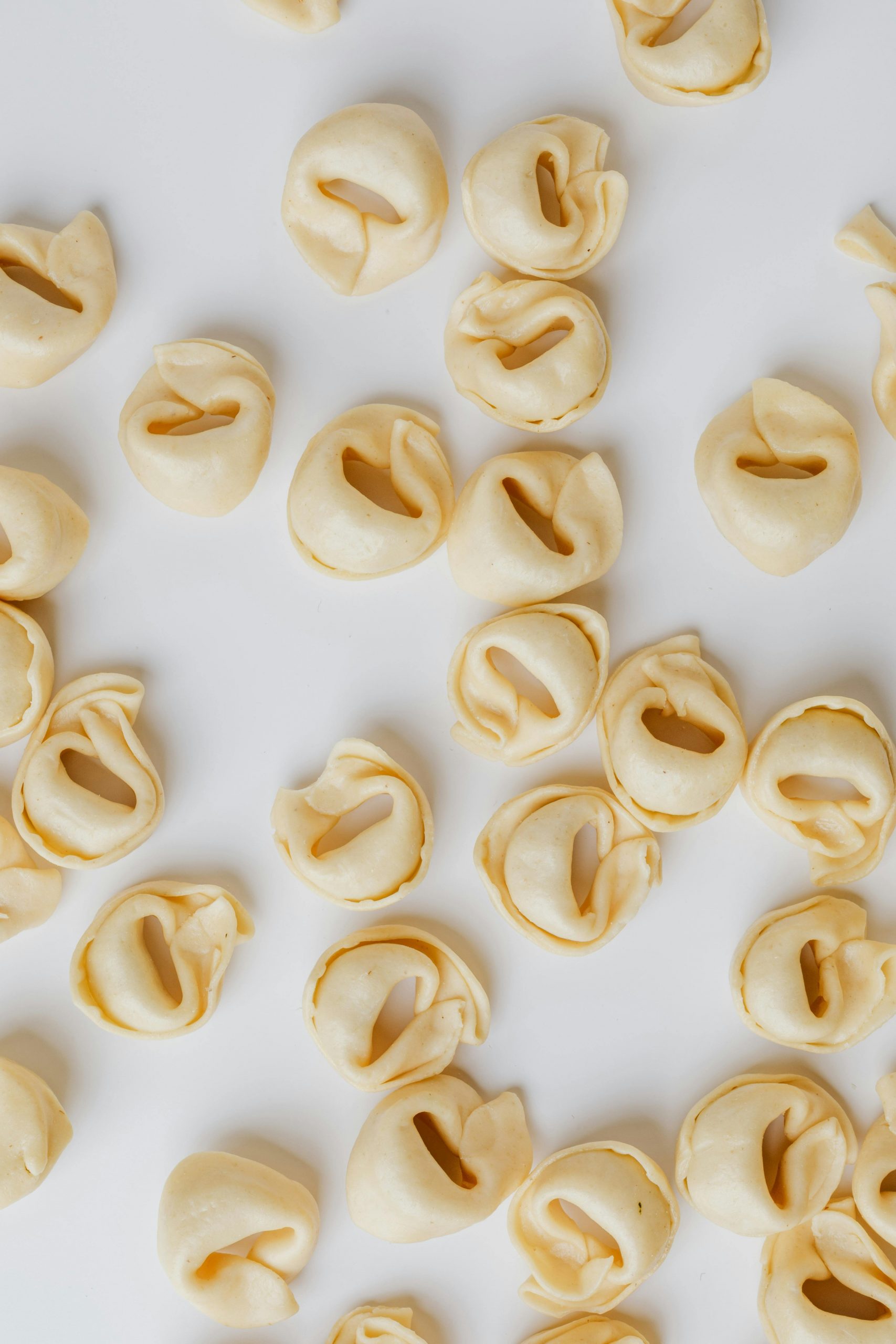Tortellini is one of the most recognizable types of stuffed pasta from Italy’s Emilia-Romagna region. Beyond its signature ring shape, it represents a long-standing culinary tradition that dates back to the Middle Ages. This post outlines the documented origins of tortellini, how it was historically prepared, and how it’s still made today according to regional standards.
📜 Historical Origins
While many have heard the myth of tortellini being modeled after the goddess Venus’ belly button, the actual history is more grounded — and just as fascinating.
🗂️ Earliest Mentions
- 1289: One of the earliest references to tortellini (under the name torteleti) appears in a Bolognese legal document describing local food offerings.
- 1570: Chef Bartolomeo Scappi, who cooked for Pope Pius V, includes a recipe in his book Opera dell’arte del cucinare that closely resembles modern tortellini, served in a rich meat broth.
- 19th Century: Pellegrino Artusi, considered the father of modern Italian cuisine, formalizes the traditional filling in his influential cookbook La scienza in cucina e l’arte di mangiar bene.
These records point to tortellini as a regional food from Emilia-Romagna, especially around Bologna and Modena.
🧄 Traditional Preparation: How Real Tortellini Are Made
Making tortellini is a craft, often passed down through generations. The process is delicate, time-consuming, and deeply respected in northern Italy.
🥚 The Dough
- Made with:
- 100g flour per egg (Type 00 flour is preferred)
- A pinch of salt
- The dough is kneaded until smooth, then rested for 30–60 minutes before being rolled out extremely thin (under 1mm if possible).
🧀 The Filling (Filling recipe by the Dotta Confraternita del Tortellino, Bologna)
- 150g prosciutto crudo (aged Parma ham)
- 150g mortadella di Bologna
- 150g pork loin (roasted with butter)
- 150g Parmigiano Reggiano (aged at least 24 months)
- 1 egg
- Nutmeg (a small pinch)
Everything is finely minced and mixed into a smooth paste.
👩🍳 Folding Technique
- Cut the pasta into 3–4 cm squares.
- Place a small amount of filling in the center.
- Fold into a triangle, pressing edges to seal.
- Wrap the corners around your fingertip to create the signature “navel” shape.
In Bologna, this method is often taught by sfogline — women who master the rolling and folding of fresh pasta.
🍲 Serving Tradition: In Brodo Only?
Traditionally, tortellini are served in a rich capon or beef broth (tortellini in brodo), especially during Christmas and New Year’s. Although some modern versions feature cream sauces, purists insist that broth preserves the flavor and texture best.
🏛️ Cultural Protection
To defend their culinary heritage, Bologna and Modena both claim ownership of tortellini. In 1974, the Dotta Confraternita del Tortellino officially registered the authentic recipe with the Bologna Chamber of Commerce.
🧭 Quick Timeline
| Year | Event |
|---|---|
| 1289 | First written reference to “torteleti” in Bologna |
| 1570 | Bartolomeo Scappi documents tortellini in broth |
| 1800s | Artusi publishes canonical filling recipe |
| 1974 | Traditional recipe legally registered in Bologna |
At the end of the day, tortellini is a tasty tradition that’s been lovingly made and shared in Italy for hundreds of years. So next time you dig in, remember you’re enjoying a little bite of history.

Leave a Reply